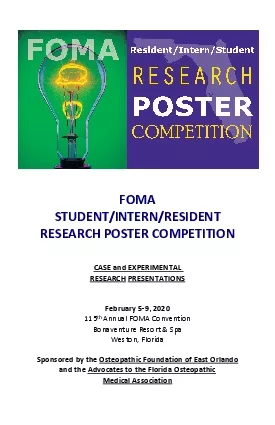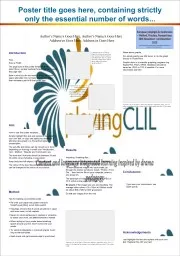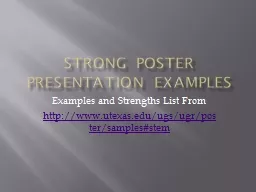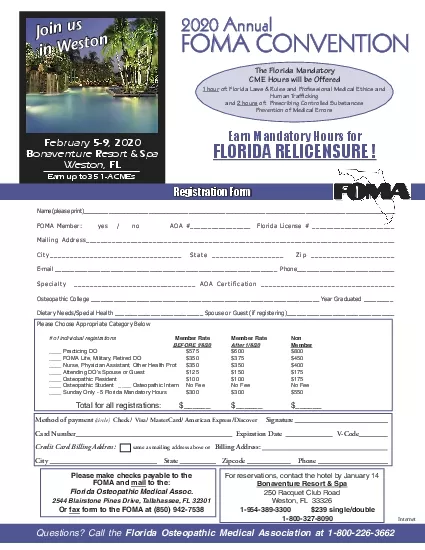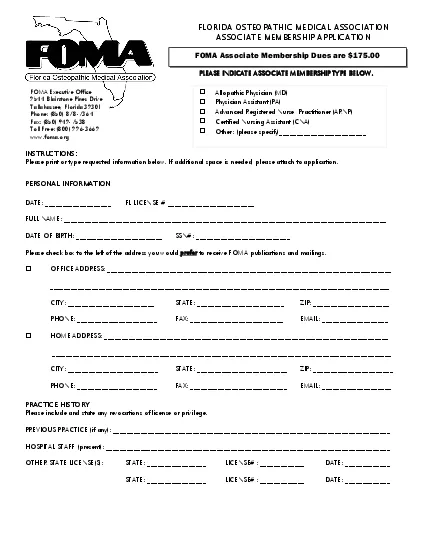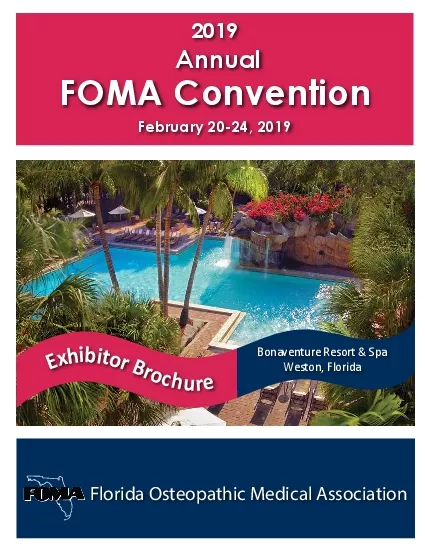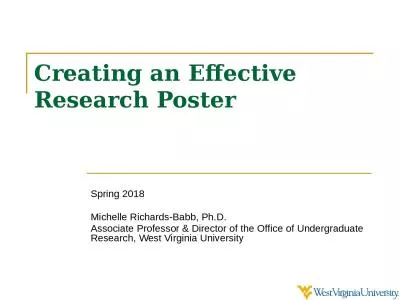PDF-FOMA STUDENTINTERNRESIDENT RESEARCH POSTER COMPETITION
Author : oryan | Published Date : 2021-08-06
CASE and EXPERIMENTAL RESEARCHPRESENTATIONSFebruary 59 2020th Annual FOMA Convention Bonaventure Resort Spa Weston FloridaSponsored by the Osteopathic Foundation
Presentation Embed Code
Download Presentation
Download Presentation The PPT/PDF document "FOMA STUDENTINTERNRESIDENT ..." is the property of its rightful owner. Permission is granted to download and print the materials on this website for personal, non-commercial use only, and to display it on your personal computer provided you do not modify the materials and that you retain all copyright notices contained in the materials. By downloading content from our website, you accept the terms of this agreement.
FOMA STUDENTINTERNRESIDENT RESEARCH POSTER COMPETITION: Transcript
Download Rules Of Document
"FOMA STUDENTINTERNRESIDENT RESEARCH POSTER COMPETITION"The content belongs to its owner. You may download and print it for personal use, without modification, and keep all copyright notices. By downloading, you agree to these terms.
Related Documents

